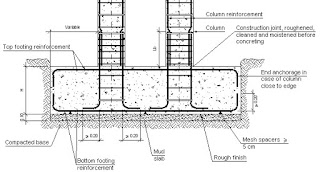Footing
Capacity, Settlement, and Energy Dissipation of Shallow
Footings Subjected to Rocking
Sivapalan Gajan1 and Bruce L. Kutter2
Abstract: The effectiveness of structural fuse mechanisms used to improve the performance of buildings during seismic loading depends
on their capacity, ductility, energy dissipation, isolation, and self-centering characteristics. Although rocking shallow footings could also
be designed to possess many of these desirable characteristics, current civil engineering practice often avoids nonlinear behavior of soil
in design, due to the lack of confidence and knowledge about cyclic rocking. Several centrifuge experiments were conducted to study the
rocking behavior of shallow footings, supported by sand and clay soil stratums, during slow lateral cyclic loading and dynamic shaking.
The ratio of the footing area to the footing contact area required to support the applied vertical loads A/Ac, related to the factor of safety
with respect to vertical loading, is correlated with moment capacity, energy dissipation, and permanent settlement measured in centrifuge
and 1 g model tests. Results show that a footing with large A/Ac ratio about 10 possesses a moment capacity that is insensitive to soil
properties, does not suffer large permanent settlements, has a self-centering characteristic associated with uplift and gap closure, and
dissipates seismic energy that corresponds to about 20% damping ratio. Thus, there is promise to use rocking footings in place of, or in
combination with, structural base isolation and energy dissipation devices to improve the performance of the structure during seismic
loading.














No comments